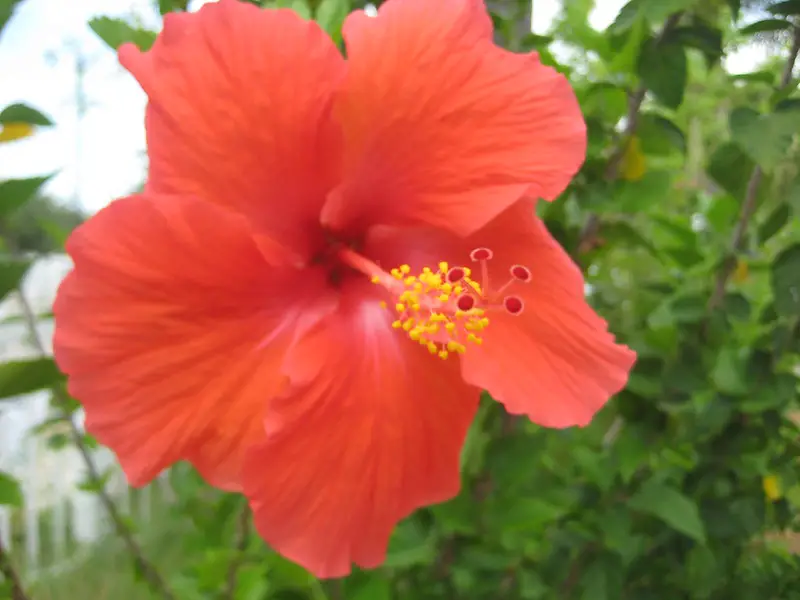We use affiliate links to run our site. When you buy through links on our site, we may earn an affiliate commission, without any added cost to you. Learn more
If you want to add some tropical flair to your home, then growing hibiscus is a great way to do it! Hibiscus plants are one of the most popular flowering plants in the world and although they are native to tropical and subtropical regions, you can grow them in any climate.
These beautiful plants can thrive both indoors and outdoors with the proper care. With a little bit of care, you can have healthy hibiscus plants that will bloom all summer long.
Today we’re going to be talking about Hibiscus; in particular Tropical Hibiscus or Hibiscus rosa-sinensis. This guide will teach you all the tips and tricks for growing hibiscus both indoors and outdoors.
How to Grow Hibiscus:
If you’re looking for a splash of color in your home, hibiscus plants are a great option. And luckily, they’re not too difficult to grow. Here are a few tips on how to get started.
Light:
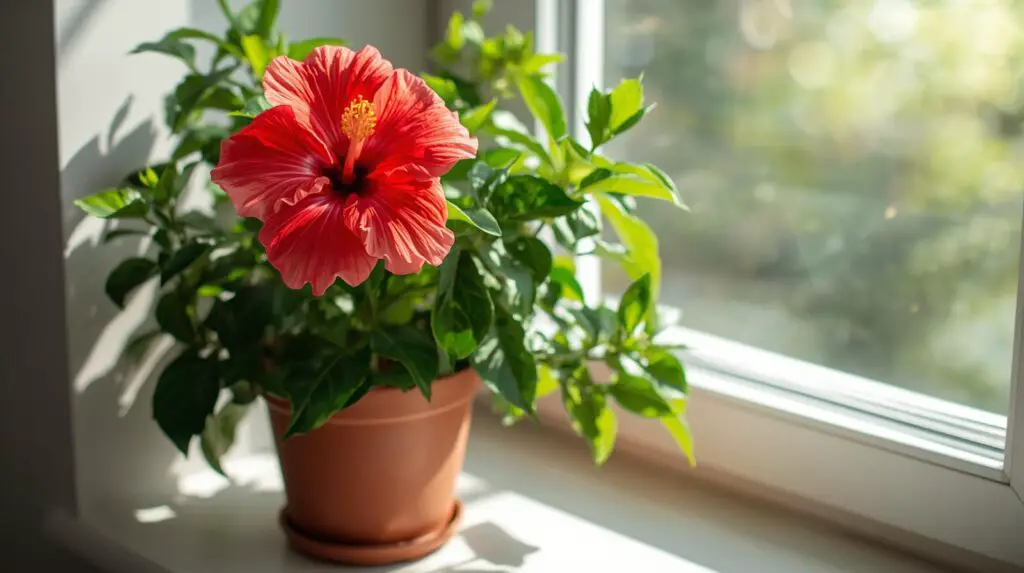
Hibiscus plants prefer full sun with very little shade. The more direct light they get, the better. Being a tropical plant, Hibiscus is always planted in full sun exposure.
For a newly bought plant or one that is recently repotted, too hot sun, especially in summer can cause stress on the plant. Protect the plant from scorching noon sunlight from 12 to 2 pm with a green shade, especially in summer.
Can you grow hibiscus indoors?
If you are planning to grow hibiscus indoors, make sure it gets bright light. Normal house lights are not sufficient for blooming hibiscus. You can place them in a south-facing or west-facing window where they can get at least 5 hours of direct sunlight, but you have to supplement this with artificial lighting.
The best solution for growing hibiscus indoors is to use a grow light. There are many grow lights available in the market with various price ranges. The key here is to invest in a good-quality grow light so it can mimic the sunlight properly.
My personal favorite is this one from spider farmer. It is a full-spectrum grow light with high output and is probably one of the best grow lights for hibiscus plants.
- NOTE: The product stand needs to be pressed down…
- 3 Lighting Modes and 10 Brightness: The full…
- Timer Adjustment: This small halo grow light have…
Soil:
There are a few things to consider when choosing the best soil for growing hibiscus plants. The first is the soil’s texture, which should be loamy or sandy.
Loamy soils are an ideal choice because they contain a mix of sand, silt, and clay particles, providing good drainage while still holding moisture and nutrients.
You can also grow hibiscus in sandy soil. They are also well-drained, but you may have to amend the soil with organic matter to improve moisture retention.
For growing hibiscus in pots a rich, well-drained potting mix is your best choice. The best hibiscus potting mix should have 2 parts potting soil, 2 parts peat moss or coco coir, and 1 part perlite or vermiculite.
Soil pH for Hibiscus:
The pH of the soil is a measure of the acidity or alkalinity of the soil. It affects the availability of nutrients to plants, and it also affects the activity of microorganisms in the soil.
The ideal soil pH for hibiscus plants is around 6.5, which means they prefer slightly acidic soil.
To find out your current soil pH, do a soil test with a pH testing tool like this. If the pH is on the higher side, reduce the pH with these methods. If the soil is too acidic use these methods to bring down the acidity level of the soil.
Please remember, soil pH is crucial for your hibiscus plants. This range of pH provides the optimal level of nutrients for the plant, allowing it to flourish. Soil with a pH outside of this range can still support hibiscus growth, but the plant may not be as healthy or robust.
How to Propagate Hibiscus Plants:
You can propagate Hibiscus plants in mainly 3 ways, and they are quite easy to do. The main propagation methods are:
- Through cuttings
- Through Seeds
- By Division.
Cuttings:
You can do cuttings whenever you find any new growth on the plant. The best time to do this would be in the spring. Cut 5-6 inches long new plant growth to make cuttings.
Ideally, the branch should be as thick as a pencil. Use the techniques discussed in this post to prepare cuttings for your Hibiscus plant.
After 3-5 weeks, they should develop a good root system and be ready for transplanting.
Seeds:
For growing Hibiscus from seeds, you need to first sow them indoors. Soak seeds in warm water for one hour before sowing. You can also sow the seeds directly in the ground.
Division:
The perennial hibiscus is mainly grown this way. As the new shoots are very delicate and can not tolerate transplanting, use caution while working with them.
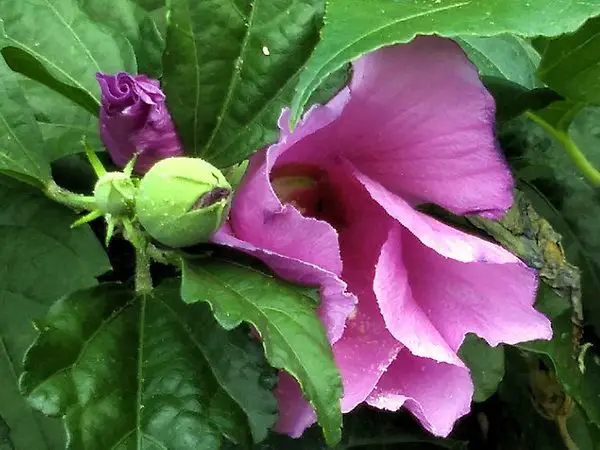

Temperature:
Hibiscus needs warm temperatures for blooming and it does not tolerate cold temperatures. Ideally, 65° to 75°F is best for growing Hibiscus.
Grow them indoors in a warm, sunny location where daytime temperatures are no lower than. If the temperature drops below 55°F flower buds may fall or stop forming altogether.
Humidity:
Being a tropical plant, Hibiscus needs a lot of humidity to thrive. If you are growing them indoors, adding a humidifier will help you keep the ideal humidity level. Avoid placing them in areas where they will be blasted with cold air from time to time.
Ideal Fertilizer for Hibiscus:
Hibiscus plants are heavy feeders and need some fertilizer, especially if you are growing them in containers. Use slow-release fertilizers to feed your plants. It helps to feed the plant throughout the growing season.
Add 1 tablespoon of bone meal per container once every 3 to 6 months. This is very important if you want your plants to bloom fully. Also, add well-rotted manure, cow dung, or vermicompost once a month after tilling or raking the topsoil.
Use a liquid fertilizer with a high phosphorus level like this, to feed your plants from time to time. It will encourage stronger and more blooms. Stop fertilizing your plants during winter unless you see nutrient deficiencies.
How to Water Hibiscus Plants:
Hibiscus doesn’t like to dry out, it can cause wilting. So keep the soil relatively moist, not saturated. They always prefer an evenly moist root ball.
For planting Hibiscus outdoors, after planting it in the ground, give supplemental water for the first year. It is vital that the plant first needs to get established.
For growing Hibiscus in a container, choose a container that is not too large or not too small. Hibiscus actually performs well when it’s slightly root-bound.
Make sure the pot has drainage holes.
While repotting, never use a very large container; choose only a slightly larger or the next size of the container.
Water from the top of the soil till it runs out from the bottom holes so that the bottom roots are also watered thoroughly. While watering your plants, follow proper watering techniques.
Now, drain off any excess water.
Check your plant daily. Never allow the soil to dry out to the point of wilting. During the winter months, you can reduce the watering frequency.
How to Prune Hibiscus Plants:
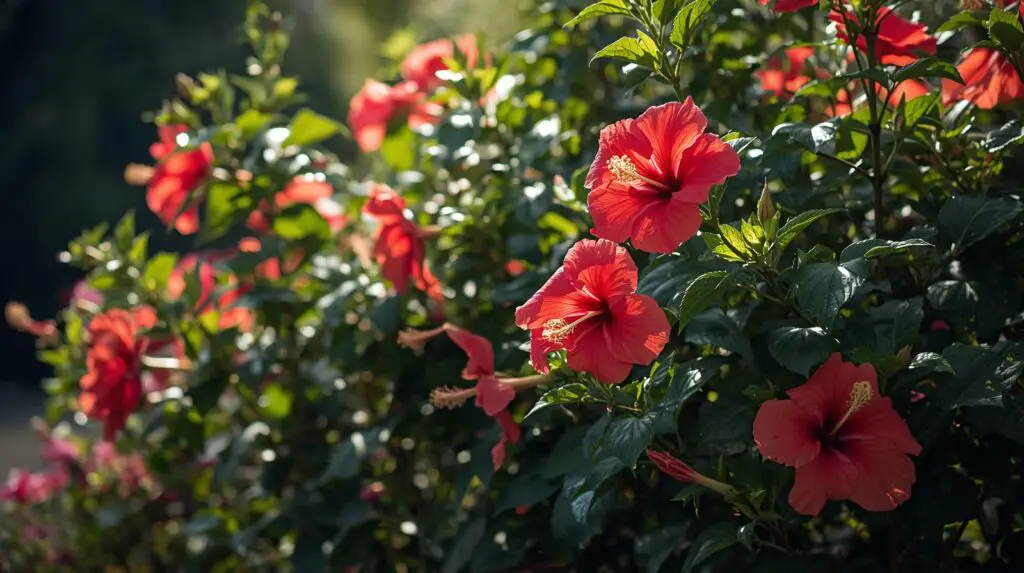

Pruning is very important for a Hibiscus plant if you want a bushier plant. Trim down any leggy growth to the rest of the plant. It will maintain a nice shape and will encourage growth. They can withstand heavy pruning so don’t worry about the survival of the plant.
Indoor hibiscus needs lighter but frequent pruning. Just remember, as plants flower on the new branches, pruning will delay flowering. So the best time to hard prune hibiscus is at the end of winter or just the beginning of spring.
Hardiness:
Being a tropical plant, Hibiscus needs warm temperatures for survival. The ideal temperature for growing Hibiscus is above 50°F. Anything below 35°F will die.
Many Hibiscus species can live in Hardiness Zones from 9 to 12.
Common Pests and Diseases of A Hibiscus Plant:


Some most common pests of a Hibiscus plant are:
- Aphids
- Thrips
- Spider mites
- Whitefly
- Scale, and
- Mealybug to a lesser extent.
Use organic pest control techniques like beneficial insects or insecticidal soaps to fight those pests. Wash the foliage regularly to keep it healthy.
You can use neem oil spraying once every 15 days or monthly for maintenance, even if there are no pests. For severe pests, attacks apply twice weekly for a few weeks.
Some of the most common diseases of a Hibiscus plant are
- Powdery mildew
- Botrytis.
- Black spots, etc.
Conclusion:
In conclusion, growing hibiscus plants at home is not as difficult as it may seem. By following the tips outlined in this article, you can be successful in growing hibiscus indoors and outdoors. With a little patience and care, you can enjoy the beauty of these flowers in your own home.
So why not give the Hibiscus a try? You may be surprised at how easy and rewarding it is to grow this lovely plant.
I hope the information was helpful to you. If you like the post, share it with others, and Don’t Forget To PIN IT
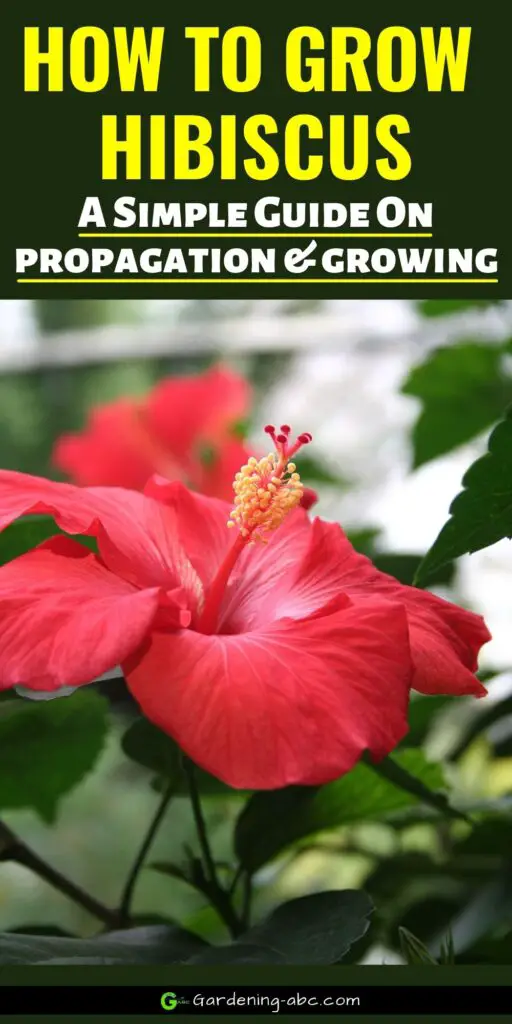

Amazon and the Amazon logo are trademarks of Amazon.com, Inc, or its affiliates.


Hi there! My name is Prasenjit and I’m an avid gardener and someone who has grown a passion for growing plants. From my hands-on experience, I have learned what works and what doesn’t. Here I share everything I have learned.
